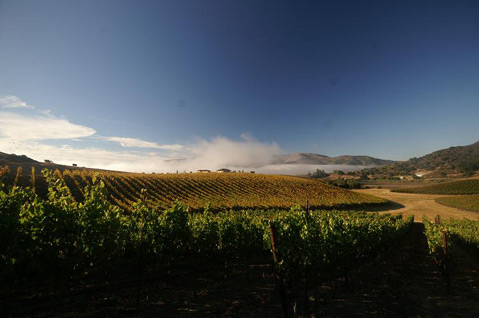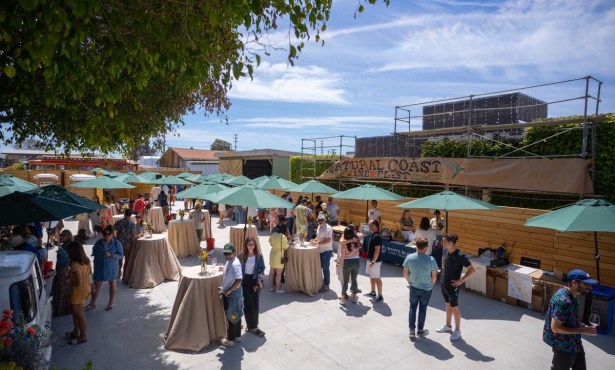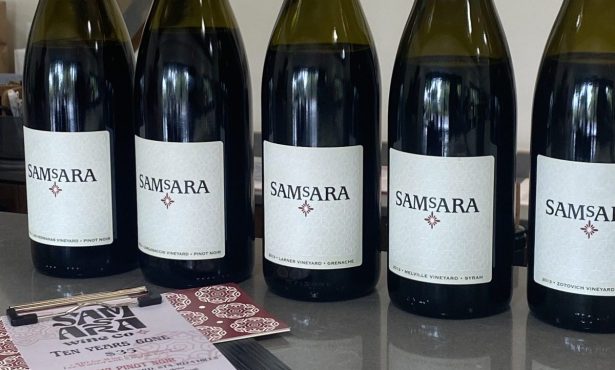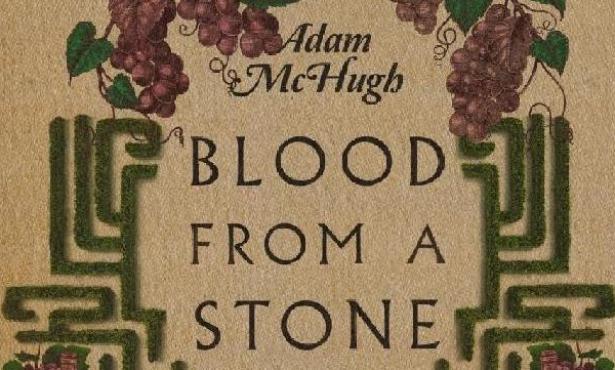Wine 101: The Buds Are Breaking
Peter Work's Ampelos Vineyard Coming to Life

If your travels have taken you through Santa Barbara wine country in recent days, you’ve probably noticed that the vines are starting to come to life by shooting out their first green leaves. This is bud break, and the perfect time for the next installment in our Wine 101 series, with Professor Peter Work of Ampelos Vineyard answering our questions about this critical time in the growing season.
Why is bud break important?
It’s the beginning of the journey. It is the first expression of the energy the vine will demonstrate during the growing season and it gives us an early indication of the crop level. Once the green material on the buds is even just half an inch, we can see the clusters (called inflorescence) and count how many there are.
What do you watch for on the vines between pruning and bud break?
Not much is happening on the vines themselves before bud break since they are still dormant. But as the small buds are getting ready to push, we observe how they get furry and swell. We also keep an eye on how many buds there are per position — just one or in some cases two, which gives us an indication of how the year will shape up.
But the most important thing to look at is the weather forecast and the calendar: We usually don’t like an early bud break since that could cause frost problems. And we like to get some rain to keep the soil moist and soft. So far, 2013 has been fairly dry with only around 7 inches of rain — an average year is 12!
How about between the vines? How important is the cover crop?
The area between the vine rows is very important. This is where we can work with the soil to create and improve the nutrients for the vines. Every year, we take nutrients away from mother nature when we harvest the clusters. Somehow we have to replenish this to make sure the vines stay healthy. A conventionally farmed vineyard will spray artificial fertilizers, but with our organic and biodynamic farming focus, we have chosen to work on the overall health of the soil.
At the end of harvest every year, we seed organic cover crop between the rows: sweet peas, bell beans, triticale, rye, and vetch — legumes that will bind nitrogen, which is 80 percent of the air we breathe. As these legumes grow during the winter, a “forest” of nutrients is created inside the vineyard, which we end up mowing and disking into the soil when the nitrogen is at its peak level, typically around the end of March. Once in the topsoil, nitrogen becomes ammonia which becomes nitrite that the vines can uptake as a macro nutrient. Working with mother nature, we have created “food” for the vines!
How do bugs play a role in the vineyard?
We have learned that when our cover crop is growing during the winter, there are a lot of beneficiary insects that live inside this “forest” — millions of ladybugs and good spiders, which are insects that go after the bad ones, like aphids. Once we mow the cover crop we remove their habitat — not what we wanted to. So for the last five years, we have created another habitat for our co-workers by not seeding, mowing, or working in every 10th row. They are protected to be the good insects’ home for awhile when the canopy develops on the vines, which is where they ultimately will move to. That’s exactly what we want!
What’s a sign of strong bud break?
We prefer a relatively late bud break and we watch what is happening in our neighborhood. Secondly, we like to watch for consistency, from the buds at the end of the canes versus the center of the vine, from the vines at the top of the hill to the ones at the bottom. We spend a lot of time at this year just walking around looking at the vines.
What problems might arise at bud break?
When the small shoots are starting to push out, the vines are becoming very sensitive to a number of issues, first of all frost. Since we in the Sta. Rita Hills can have spring frost as we did in 2010 and 2011, we need to keep a close eye on the weather forecast. Frost during the winter when the vines are dormant is not a problem, but once there are tiny green leaves and clusters, even an hour of frost can create permanent damage for the year and sometimes for the following as well.
The first thing to do is to make sure that when you plant a vineyard you have done your homework well: Check the weather records for many years and avoid planting in areas that are prone to spring frost. In general, planting in flat areas with no solid air draining is not desirable. Secondly, prepare for a potential frost problem by installing overhead sprinklers that can deliver water from a well with a temperature about 50F.
Another problem that starts shortly after budbreak is that powdery mildew will develop, which can damage leaves and clusters if we don’t stay on top of it. Once the shoots are a few inches long, we start spraying with organic certified material that has no impact on the vines, soil, or environment but controls the mildew.
What’s the bud break schedule for your vines?
It follows the laws of mother nature. Pinot noir is from a cold climate in France: Burgundy. Therefore it is the first to have bud break. Syrah, which is from northern Rhone, requires more heat. Grenache, from the warmer Rhone, is the late one and we will probably be at the end of April before they push. And, by the way, it’s the same order for the rest of the year with flowering, veraison (color change), and harvest.
After bud break, what comes next?
As the buds starts growing into shoots, we will be observing the early indicators of the vines vigor for this year, especially the number of shoots per vine and the number of clusters per shoot. Based on this, we determine the strategy for the next vine related activity; shoot thinning. This is when we visit every position of each vine and determine how many shoots to thin off to help the vine optimize its crop and focus its growth. It is all about maintaining the perfect balance between the source of energy (leaves, roots, etc.) and the sink of energy (clusters mainly) to ensure that these clusters ripen in a the most balanced way.
Also, the vines need water to grow. Depending of the precipitation of the year, we will start irrigating earlier or later. Once the shoots are growing, we observe on a weekly basis the shoot tips and the top tendrils to determine the vines needs for water. We typically start irrigating in April at a rate of 2-4 gallons per vine per week. We prefer irrigating on a descending moon to penetrate deeper into the ground. And off course our pump is all solar powered — we are sustainable!



